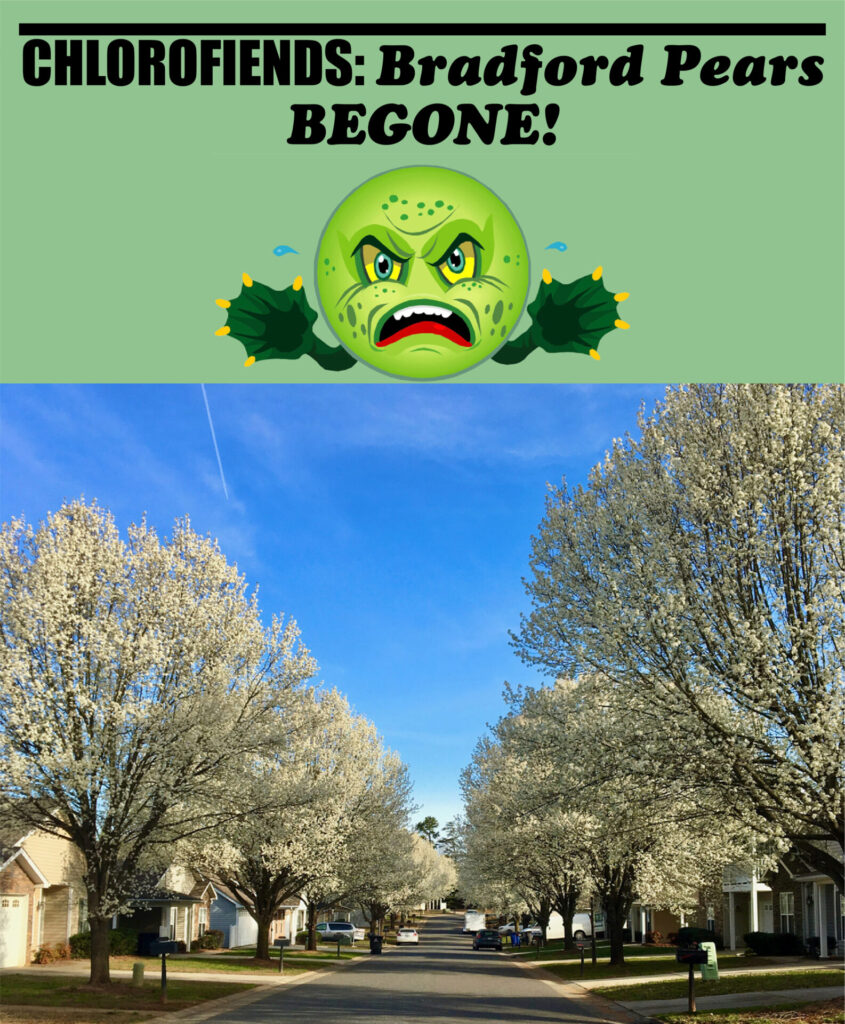(and here’s how)
By Lisa Lofland Gould
Ah March! The time of year when we are weary of winter’s cold and ready for warmth and blooms. But wait–what’s that awful smell coming from that tree with pretty white flowers? Rotten fish? Urine? Surely ammonia is in there somewhere–it’s Bradford Pear, delightful to some pollinators and disgusting to most human noses.
Touted as sterile, it became otherwise
Bradford Pear (Pyrus calleryana ‘Bradford’) is a form of Callery Pear and has been one of the most commonly planted non-native street trees in eastern North America. The original Callery Pear, native to China and Korea, was introduced into Boston’s Arnold Arboretum in 1908. It was hoped that cultivars of Callery Pear could be used to develop resistance to a fungal infection, Fireblight, that was plaguing Common Pear (Pyrus communis), a European native. The cultivar ‘Bradford’ lacked the thorns of other Pyrus species and was touted as a sterile hybrid; it became the darling of the nursery industry and was endlessly planted along streets and in housing developments and parking lots all over the eastern United States.
It spreads rampantly
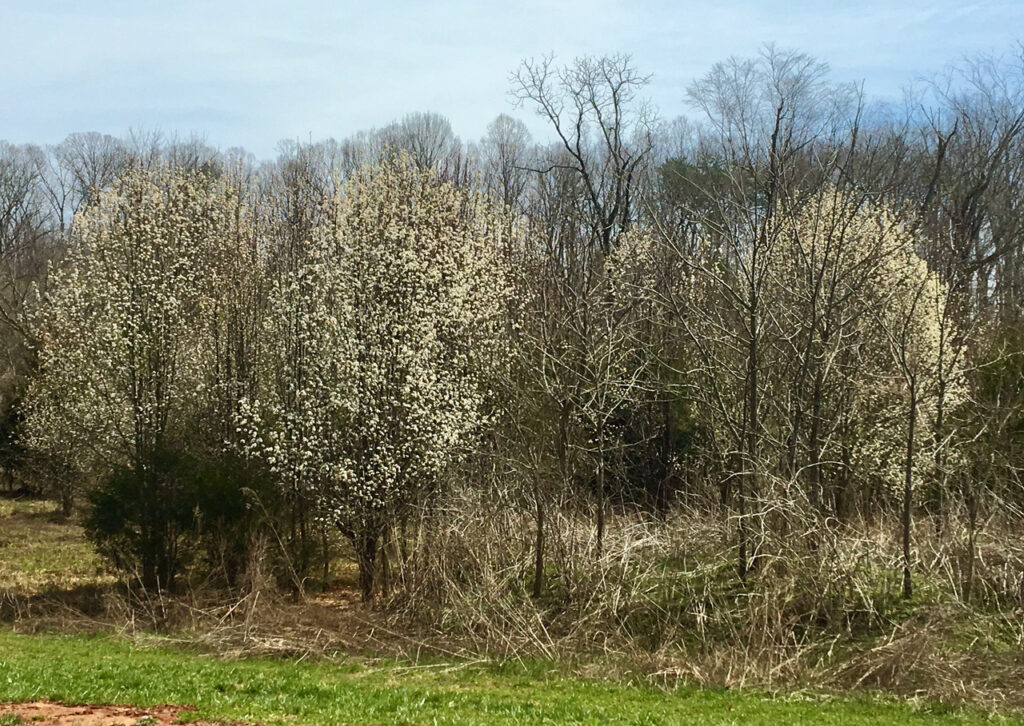
Over the years numerous cultivars and hybrids have been developed, including crosses with Birchleaf Pear (Pyrus betulifolia) and Chinese White Pear (Pyrus bretschneideri), so it’s hard to tell whether plants are actually ‘Bradford’ or a mixture. The result of all this hybridization, grafting, and cross-pollination is that many supposedly ‘Bradford’ trees produce both thorns and fruit, and alas, spread rampantly over the landscape, invading woodlands, old fields, and forest edges.
It has low value to songbirds
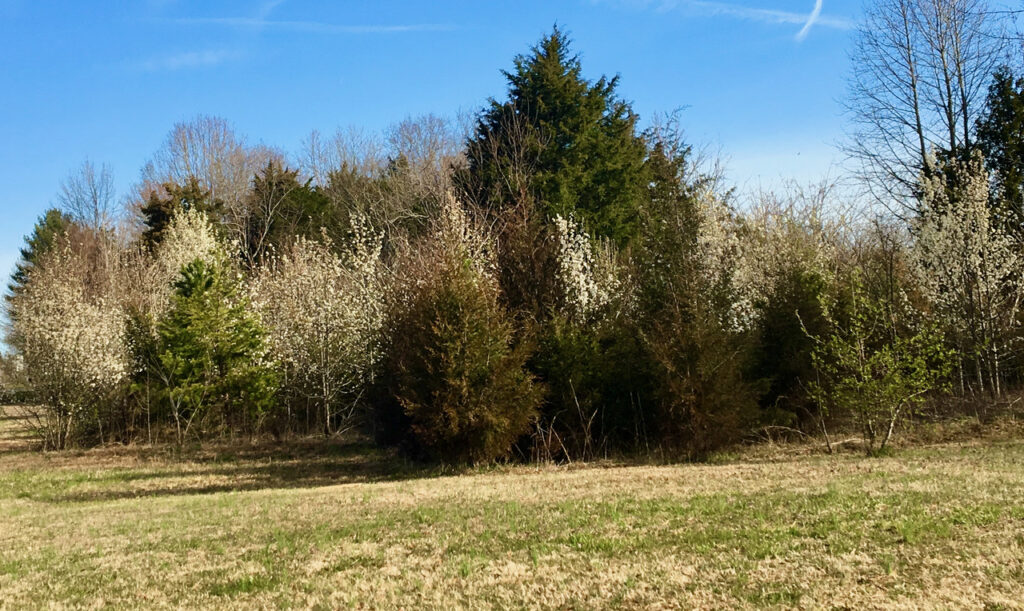
While birds and mammals may relish the fruit and thus help spread the trees, the foliage is little used by our native insects. Bradford Pear is of very low value, for example, to breeding songbirds, which relish protein-rich and easily digested caterpillars for their young. In an elegantly simple experiment conducted by University of Delaware professor Doug Tallamy, a White Oak (Quercus alba) was examined at eye level, to see how many caterpillars were present: they counted 410 caterpillars of many different species. The same examination was conducted on a similarly sized Bradford Pear, and only one caterpillar, of one species, was found. Bradford Pear is a food desert for our songbirds!
It’s little used by native insects
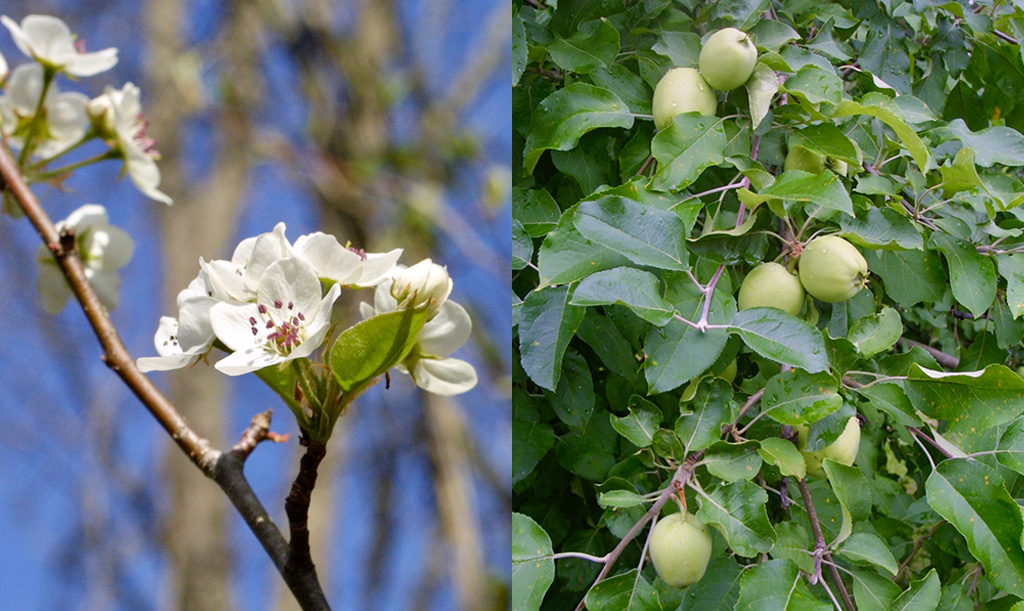
This lack of insect use of non-native trees such as Callery Pear comes as no surprise: approximately 90% of insect species rely on specific plants—the plants they have evolved with—for their life cycle. It’s no wonder that insect numbers are plummeting around the globe: the more we replace native species with non-native ones, the fewer “homes” are available to insect life.
Bradford Pear isn’t just useless to our native insects and songbirds: people are increasingly disenchanted with it. Not only does Bradford Pear stink while it’s in bloom, but the trees have weak wood and poor branching structure, which leads to branches falling apart in wind and ice storms; sometimes the trees split right down the middle. Aesthetically, the uniform shape of the trees makes Bradford Pear my personal candidate for the World’s Most Boring Tree.
Some states ban this invasive plant
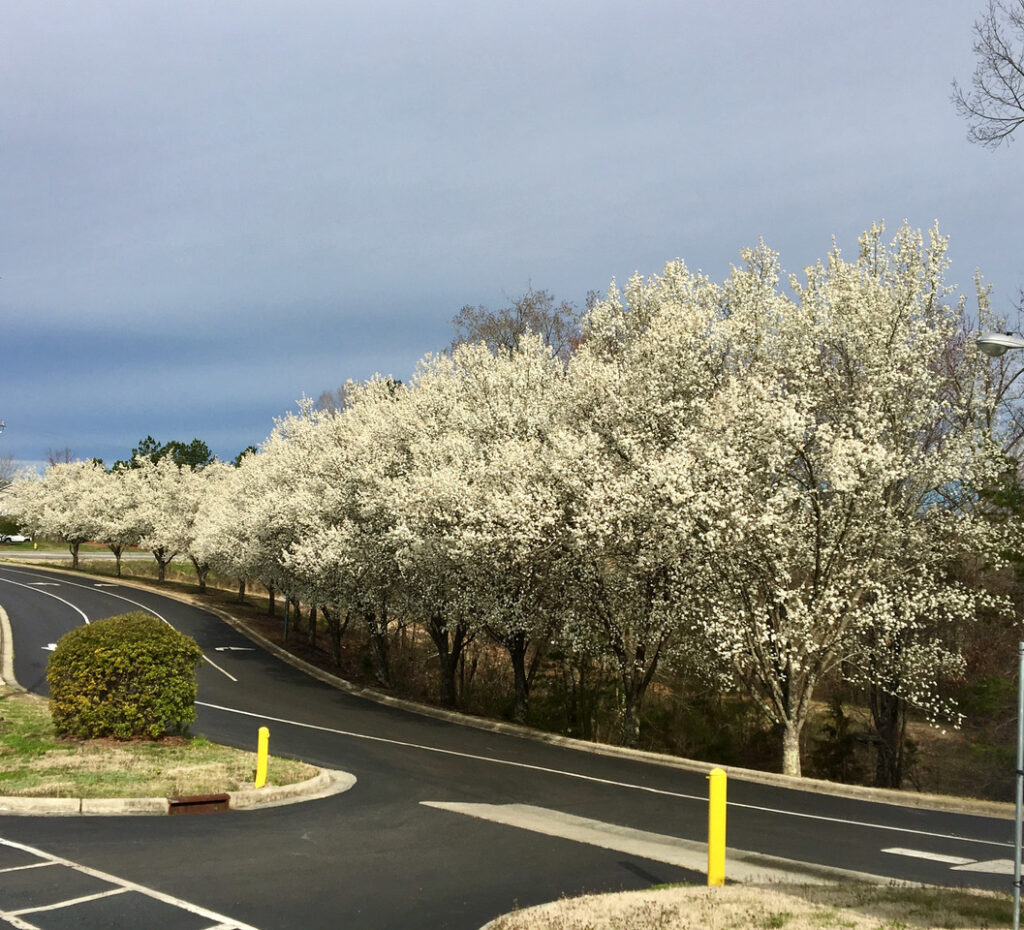
So–what to do? Some states, including Pennsylvania and South Carolina, are phasing in bans on the sale of Bradford Pear. Many municipalities now refuse to plant them on city property, including roadways. Other towns and states have initiated Bradford Pear replacement programs, offering native trees to replace Bradford Pears that have been cut down.
North Carolina has remove/replace events
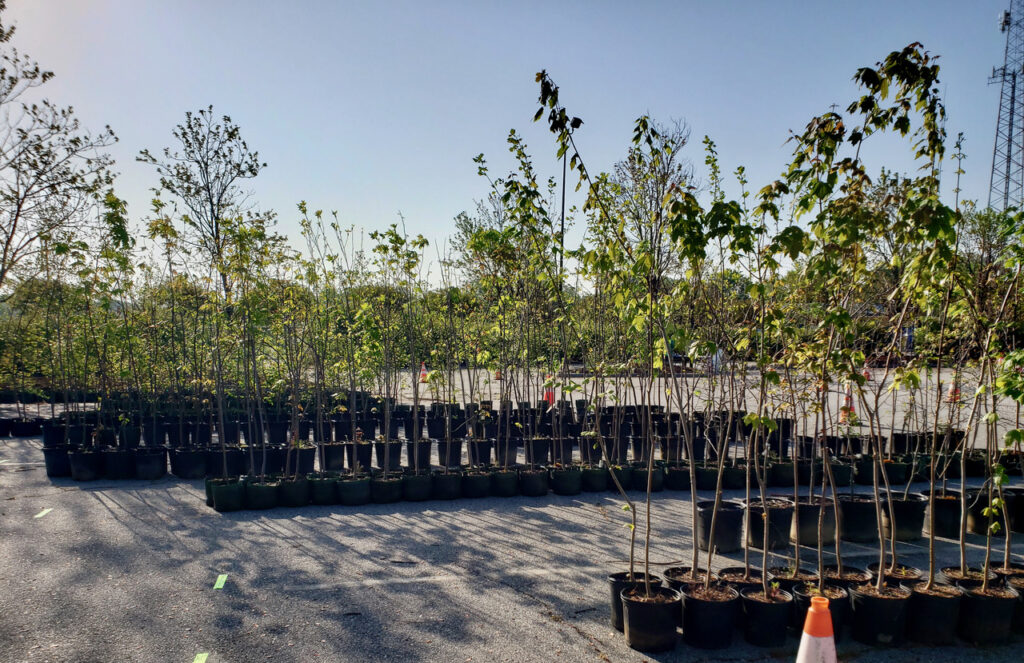
Here in North Carolina the NC Urban Forest Council (NCUFC) and its partners are coming to our rescue! In April 2022, the NC Urban Forest Council hosted its first Bradford Pear Bounty Program. Held in Greensboro, the event “had an overwhelmingly positive response,” according to NCUFC Executive Director Leslie Moorman. “It appears that many NC citizens have been looking for a reason to remove Bradford Pears from their property. It has been amazing to watch people embrace the program. It was surprising how few people knew that Bradford Pear was invasive. Many people simply do not like the tree because of how the flowers smell or that it breaks apart in storms. We are hoping to focus the program’s education around the fact that it is an invasive species and causing problems in our native woodlands.”
October events are in Matthews and Monroe
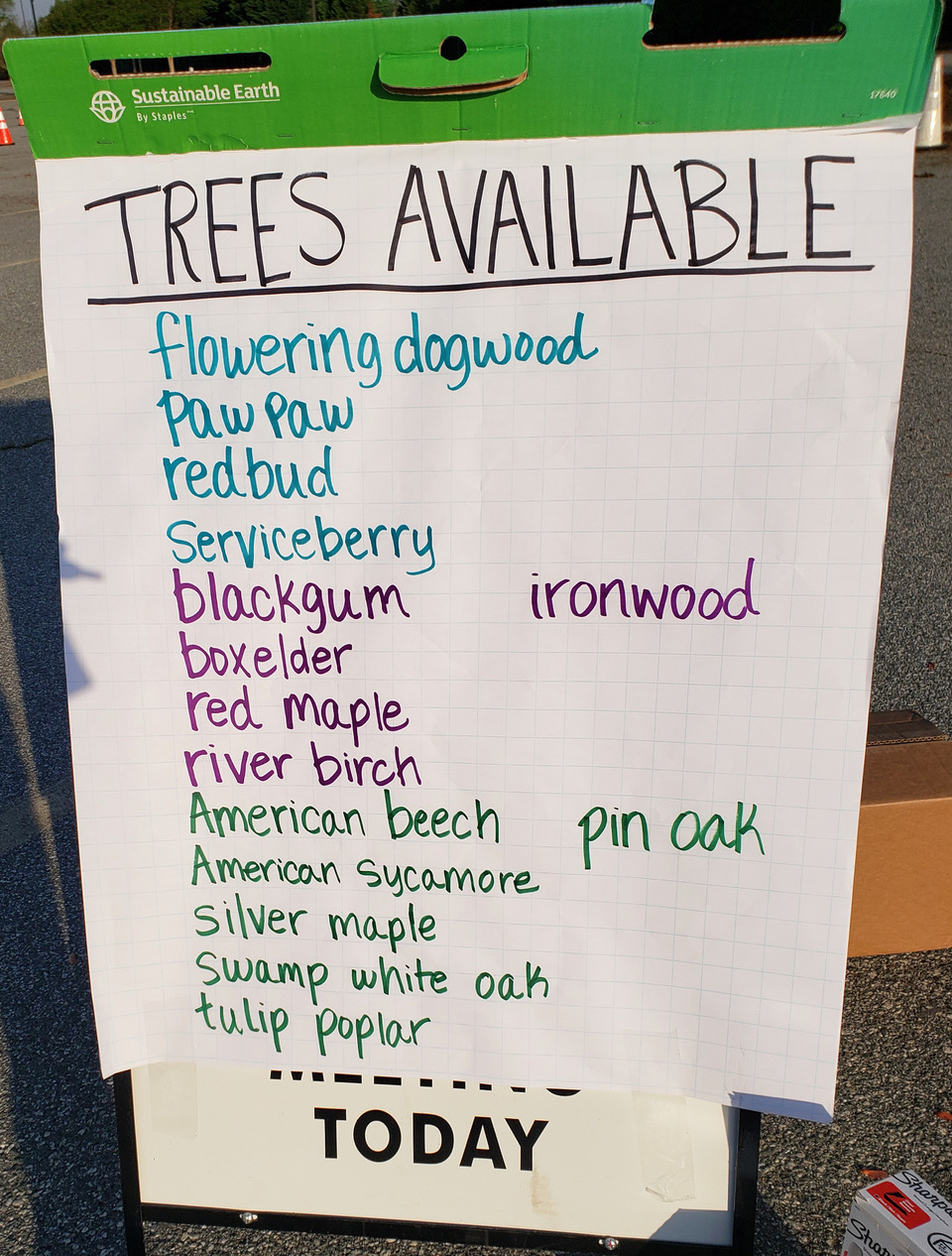
Matthews and Monroe will be the locations for two Bradford Pear Bounty Program events, one October 15, the other October 22. To participate, property owners must register and bring in pictures (before and after removal) of the Bradford Pears they have cut down. The program offers up to five native replacement trees (of a variety of species, in 3-gallon pots) to match a one-to-one removal of up to five Bradford Pears. For further incentive, the program collaborates with local tree companies to offer a discount on Bradford Pear removals.
More removal and replacement events in 2023 will likely be in Raleigh/Durham, Wilmington, Greenville, Concord, and Hickory. Moorman notes, “We are developing guideline documents so communities can organize their own Bradford Pear Bounty event in the future, partnering with the state program. . . . We are also hoping to grow the program [when funding sources are available] so we can partner with lower income neighborhoods and actually pay for a portion of the removals.”
The Bradford Pear removal/replacement program is a collaborative effort by the NC State Extension, NCUFC, NC Forest Service, and NC Wildlife Federation, with funding from the Duke Energy Foundation and the USDA’s National Institute of Food and Agriculture Renewable Resources Extension Act. Eventually, the NCUFC hopes “to extend this ‘Bounty’ effort to other invasive tree species as they become problematic, draw attention to the issue of invasive trees in our urban areas, and offer possible solutions to help manage them.”
In every location, the NC Urban Forest Council plans to partner with local groups such as the NC Native Plant Society chapters (NCNPS), cooperative extension offices, wildlife federation chapters, Audubon Society groups, and other interested organizations. NCNPS volunteers helped with the Greensboro event and NCNPS already has donated $1000 to the Bradford Pear Bounty Program. Individual NCNPS members can also join and donate to the NC Urban Forest Council.
As always, GO NATIVE!
By Lisa Lofland Gould
Native Plant News – Fall 2022

Lisa Gould is a plant ecologist and co-founder of the Rhode Island Wild Plant Society; she currently serves on the NCNPS board of directors and chairs the management committee for the Emily Allen Wildflower Preserve in Winston-Salem.
Chlorofiends! is a regular column in Native Plant News. If you have information or comments on invasive species in North Carolina, please share them with Lisa Gould (lisalgould@gmail.com).
*Thanks to Jim Butcher’s The Dresden Files for the column title.
Copyright © 2022 North Carolina Native Plant Society. All rights reserved.
